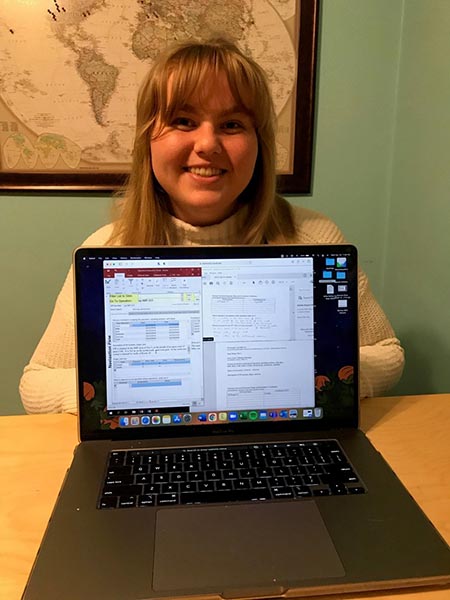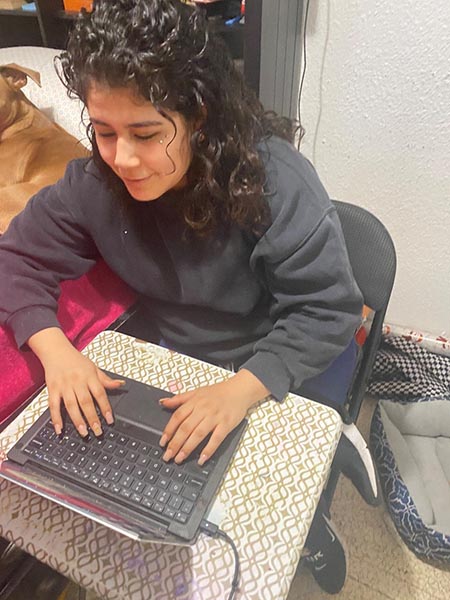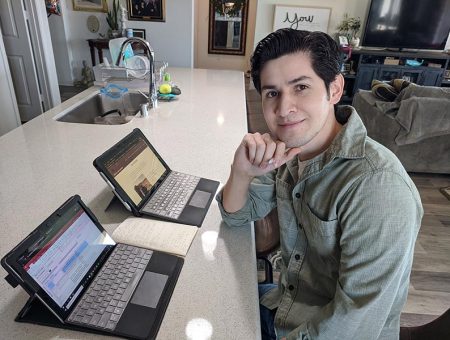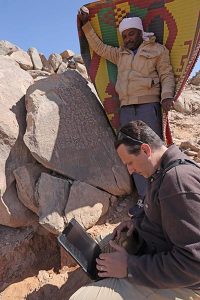
2020 HARRIS GRANT REPORT: THE WADI EL-HUDI EXPEDITION
ASOR’s Harris Grant helped to fund the creation and implementation of a spatially organized, archaeological database for the Wadi el-Hudi (WEH) Expedition to Egypt. In doing so, ASOR is helping to foster original research, streamline archaeological recording and accuracy, assist international collaboration for publications, encourage scholarship, facilitate virtual visitation of the archaeological sites, and promote educational opportunities for undergraduates.
Wadi el-Hudi was the ancient world’s primary source of amethyst used in jewelry and traded throughout the ancient Mediterranean World. The WEH Expedition is studying industrial mining practices, living conditions of miners, and administrative organization and supply of expeditions. To do this, they are mapping, exploring, and recording this unique place for the future.
The creation and implementation of the WEH database is a quintessential next step for the teams’ research, publication, and public outreach for multiple reasons. It helps them integrate all archaeological data from finds to photos with their mapping data to spatially analyze patterns and practices across the sites. The Wadi el-Hudi team is turning the data into a 3D virtual experience so that anyone can visit the site from home. This database will populate the 3D models with interactive content so that viewers can look at objects or photos in the original contexts that they were found, just like the original archaeologist.
The database will also streamline archaeological work in and out of the field with increasing accuracy. Specialists and archaeologists will be able to input data directly into the database while in the field and immediately check for missing or inaccurate information. Similarly, the online component of the database will allow international team members to collaborate on the data in real time to speed up time to publication and the depth of analysis available. Eventually, all of this data will be archived online for future scholars to access and use in new ways.
This creation of this database also provided educational opportunities for three students at California State University, San Bernardino. With the help of ASOR, Cindy Moreno, Erika Kelley, and Fernando Sanchez were hired as the database team. They inputted, checked, and beta-tested its usage. This career building experience is a stepping stone in their professional lives. As future archaeologist Erika Kelley says, “Working on the Wadi el-Hudi Expedition’s database has been an incredibly educational experience. … I have now learned more about the archaeological process, what archeologists actually do when observing and excavating a site, and the different tools they use.” Cindy Moreno also benefited from this experience saying, “I lucked out to have been able to work with Dr. Kate Liszka and her team. … I saw a new side to what it is to be an archeologist, and I felt inspired by their mission to bring Wadi el-Hudi to life through a virtual means. …I can confidently say that this job experience has given me courage to strive for my dreams and strive to make a difference in the world.”
ASOR’s support of archaeological projects is making a difference in the world in enumerable ways.
-Kate Liszka, California State University, San Bernardino



American Society of Overseas Research
The James F. Strange Center
209 Commerce Street
Alexandria, VA 22314
E-mail: info@asor.org
© 2023 ASOR
All rights reserved.
Images licensed under a Creative Commons Attribution-NonCommercial-ShareAlike 4.0 International License
COVID-19 Update: Please consider making payments or gifts on our secure Online Portal. Please e-mail info@asor.org if you have questions or need help.
